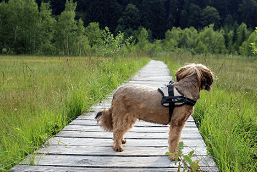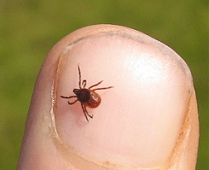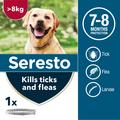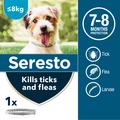Experts are warning that an outbreak of the tick-borne disease Babesiosis is of 'huge significance' to the health of pets as it threatens to spread throughout the UK. But what is Babesiosis and how can it affect our dogs?
Babesiosis is a malaria-like disease caused by the babesia canis parasite, which is spread by ticks. Like malaria, once contracted the parasite infects and replicates in the body's red blood cells, eventually leading to severe anaemia as the immune system rapidly attacks and destroys its own blood cells.
Symptoms of infection will vary, but look out for the following: lethargy or weakness, feverishness, jaundice, pale gums, brown or red urine, and discoloured stool. While the incubation period for Babesiosis is about two weeks, sometimes symptoms remain so mild that diagnosis might not be made for months. Therefore, if you have any suspicions at all, it is best to get your dog checked out by a vet.
 Currently, four dogs have been confirmed as having the disease, with two requiring blood transfusions and another, sadly, having died. This is in Harlow, Essex, where all four dogs were walked on a similar patch of land. Since the outbreak, the local council has acted quickly to draw up maps for dog walkers highlighting which areas to avoid, but there is every chance that cats and foxes will come into contact with babesia canis as they pass through the same areas.
Currently, four dogs have been confirmed as having the disease, with two requiring blood transfusions and another, sadly, having died. This is in Harlow, Essex, where all four dogs were walked on a similar patch of land. Since the outbreak, the local council has acted quickly to draw up maps for dog walkers highlighting which areas to avoid, but there is every chance that cats and foxes will come into contact with babesia canis as they pass through the same areas.
Although the disease is not thought to present a threat to either cats or humans, it is sensible to regularly treat all outdoor cats with a tick treatment to prevent them transferring their ticks to dogs. Despite experts predicting an inevitable spread of the disease, there are many things we can do to stall its progress and safeguard our pets.
Ticks can be found anywhere but they are more prevalent in rural and woodland areas. If you regularly walk your dog in these types of places, it is important to take the proper precautions. Ticks are difficult to spot, but once engorged with blood from having feasted, they are much easier to notice and remove.
If you happen to see a tick, grasp it close to the skin with a pair of tweezers or specialist removal tool and smoothly pull it out. Try not to puncture or break the tick as this can lead to infection. Once you have removed a tick, put it into a solution of alcohol before disposing of it.
 Generally speaking, if a disease carrying tick is removed from the skin within 24-48 hours, the risk of transmission is reduced. If your dog has a particularly thick or long coat that makes it harder to notice ticks, use a hair dryer and focus your attention behind the ears, around the head, on the underside, between the toes and at the base of your dog's tail.
Generally speaking, if a disease carrying tick is removed from the skin within 24-48 hours, the risk of transmission is reduced. If your dog has a particularly thick or long coat that makes it harder to notice ticks, use a hair dryer and focus your attention behind the ears, around the head, on the underside, between the toes and at the base of your dog's tail.
Admittedly Babesiosis is very worrying but it is important not to panic as transmission of tick-borne diseases can be prevented. If you regularly use a tick treatment and check your dog for ticks after every walk, you minimise the risk significantly. It is also important to bear in mind that the disease vector - the Dermacentor reticulatus tick - is uncommon in the UK, and not all ticks will carry the harmful parasite anyway.
VioVet stocks a range of tick-control treatments, from market-leaders Frontline and Fipnil, to the all-natural Biospotix range. We also sell tick removal tools and combs, as well as formulated shampoos. The Scalibor Collar for dogs offers great protection against ticks and other biting insects, as it contains a potent insecticide and repellent. If you have any concerns about Babesiosis or need advice, please comment below or email [email protected].
Written by: Hannah








